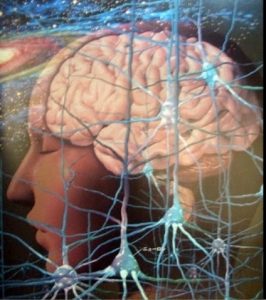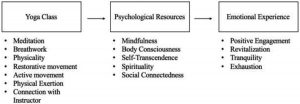Improve Sleep Quality in People with Insomnia with Mindfulness
By John M. de Castro, Ph.D.
“If you suffer from insomnia, mindfulness helps you be more accepting of your experience when you have difficulty sleeping. It may seem paradoxical, but this willingness to accept the experience of poor sleep can lead to less anxiety and better rest.” – Polan Orzech
Modern society has become more around-the-clock and more complex producing considerable pressure and stress on the individual. The advent of the internet and smart phones has exacerbated the problem. The resultant stress can impair sleep. Indeed, it is estimated that over half of Americans sleep too little due to stress. As a result, people today sleep 20% less than they did 100 years ago. Not having a good night’s sleep has adverse effects upon the individual’s health, well-being, and happiness. It has been estimated that 30 to 35% of adults have brief symptoms of insomnia, 15 to 20% have a short-term insomnia disorder, and 10% have chronic insomnia
Insomnia is more than just an irritant. Sleep deprivation is associated with decreased alertness and a consequent reduction in performance of even simple tasks, decreased quality of life, increased difficulties with memory and problem solving, increased likelihood of accidental injury including automobile accidents, and increased risk of dementia and Alzheimer’s disease. It also can lead to anxiety about sleep itself. This is stressful and can produce even more anxiety about being able to sleep. About 4% of Americans revert to sleeping pills. But these do not always produce high quality sleep and can have problematic side effects. So, there is a need to find better methods to treat insomnia. Mindfulness-based practices have been reported to improve sleep amount and quality and help with insomnia.
Acceptance and Commitment Therapy (ACT) is a mindfulness-based psychotherapy technique that is employs many of the techniques of Cognitive Behavioral Therapy (CBT). ACT focuses on the individual’s thoughts, feelings, and behavior and how they interact to impact their psychological and physical well-being. It then works to change thinking to alter the interaction and produce greater life satisfaction. ACT employs mindfulness practices to increase awareness and develop an attitude of acceptance and compassion in the presence of painful thoughts and feelings. ACT teaches individuals to “just notice”, accept and embrace private experiences and focus on behavioral responses that produce more desirable outcomes. It would seem reasonable to expect that Acceptance and Commitment Therapy (ACT) might improve sleep and relieve insomnia.
In today’s Research News article “Acceptance and Commitment Therapy (ACT) Improves Sleep Quality, Experiential Avoidance, and Emotion Regulation in Individuals with Insomnia-Results from a Randomized Interventional Study.” (See summary below or view the full text of the study at: https://www.ncbi.nlm.nih.gov/pmc/articles/PMC7916154/ ) Zakiei and colleagues recruited adults with clinical insomnia and randomly assigned them to receive 8 weekly sessions of 70 minutes of either Acceptance and Commitment Therapy (ACT) or group meetings to discuss daily activities and daily problems (active control condition). They were measured before and after treatment and 12 weeks later for experiential avoidance, sleep quality, sleep characteristics, dysfunctional thoughts on sleep, sleep problem acceptance, and emotion regulation.
They found that over training and the 12-week follow-up in comparison to the active control condition, the group that received Acceptance and Commitment Therapy (ACT) had significant reductions in experiential avoidance, dysfunctional thoughts on sleep, and significant increases in sleep quality, total sleep time, feelings of being restored by sleep, sleep problem acceptance, and emotion regulation. In addition, the greater the reduction in experiential avoidance the lower the levels of dysfunctional thoughts on sleep and the higher the levels of emotion regulation, sleep quality, and sleep problem acceptance.
These results demonstrate that Acceptance and Commitment Therapy (ACT) provided to patients with insomnia produces large improvements in sleep and decreases in cognitive-emotional processes related to insomnia. Although not demonstrated in the study, the results suggest that the improvements in sleep may occur due to ACT’s ability to alter dysfunctional thought processes and strengthen adaptive thinking. Mindfulness-based practices have been previously reported to improve sleep amount and quality and help with insomnia. The fact that ACT works so well for insomnia suggests that correcting dysfunctional thinking about sleep adds to the effectiveness of mindfulness in improving sleep. The effects were large, significant, and lasting suggesting that ACT should be prescribed for patients with clinical insomnia.
So, improve sleep quality in people with insomnia with mindfulness.
“mindfulness improves regulation of stress and increases a sense of calm that results in a better ability to sleep.” – Melli O’Brien
CMCS – Center for Mindfulness and Contemplative Studies
This and other Contemplative Studies posts are also available on Google+ https://plus.google.com/106784388191201299496/posts and on Twitter @MindfulResearch
Study Summary
Zakiei, A., Khazaie, H., Rostampour, M., Lemola, S., Esmaeili, M., Dürsteler, K., Brühl, A. B., Sadeghi-Bahmani, D., & Brand, S. (2021). Acceptance and Commitment Therapy (ACT) Improves Sleep Quality, Experiential Avoidance, and Emotion Regulation in Individuals with Insomnia-Results from a Randomized Interventional Study. Life (Basel, Switzerland), 11(2), 133. https://doi.org/10.3390/life11020133
Abstract
Insomnia is a common problem in the general population. To treat insomnia, medication therapies and insomnia-related cognitive-behavioral interventions are often applied. The aim of the present study was to investigate the influence of acceptance and commitment therapy (ACT) on sleep quality, dysfunctional sleep beliefs and attitudes, experiential avoidance, and acceptance of sleep problems in individuals with insomnia, compared to a control condition. A total of 35 participants with diagnosed insomnia (mean age: 41.46 years old; 62.9% females) were randomly assigned to the ACT intervention (weekly group therapy for 60–70 min) or to the active control condition (weekly group meetings for 60–70 min without interventional and psychotherapeutic character). At baseline and after eight weeks (end of the study), and again 12 weeks later at follow-up, participants completed self-rating questionnaires on sleep quality, dysfunctional beliefs and attitudes about sleep, emotion regulation, and experiential avoidance. Furthermore, participants in the intervention condition kept a weekly sleep log for eight consecutive weeks (micro-analysis). Every morning, participants completed the daily sleep log, which consisted of items regarding subjective sleep duration, sleep quality, and the feeling of being restored. Sleep quality, dysfunctional beliefs and attitudes towards sleep, emotion regulation, and experiential avoidance improved over time, but only in the ACT condition compared to the control condition. Improvements remained stable until follow-up. Improvements in experiential avoidance were related to a favorable change in sleep and cognitive-emotional processing. Micro-analyses showed that improvements occurred within the first three weeks of treatment. The pattern of results suggests that ACT appeared to have improved experiential avoidance, which in turn improved both sleep quality and sleep-related cognitive-emotional processes at longer-term in adults with insomnia.
https://www.ncbi.nlm.nih.gov/pmc/articles/PMC7916154/









